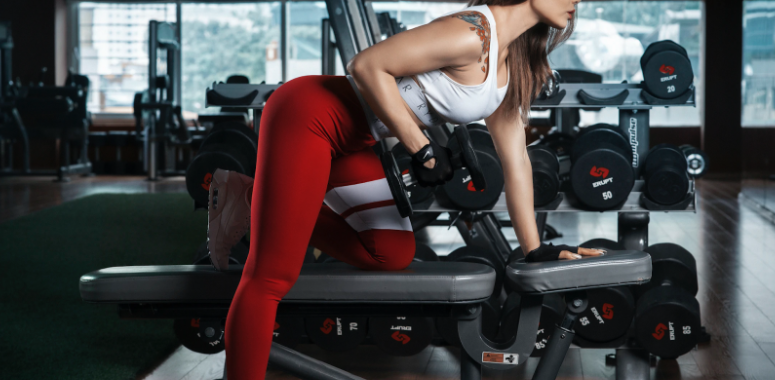Do you believe in ‘no pain, no gain’ in exercising?
If you do not think that working out is painful, you will not get any benefit from it.
You’ve probably heard it many times: “No pain, no gain”. People promoting hard fitness methods on social media want you to work hard to reach your goals. But how hard is too hard?
You should never hear a professional athletic trainer suggest painful exercises to achieve gains. On the contrary, experts warn about the “no pain, no gain” myth.
What does “no pain, no gain” mean?
Gym-goers have been using this saying for a long time to motivate them to keep pushing through hard workouts. Essentially, many people believe that if you are not experiencing pain in your muscle, then you are not working hard enough to have physical gains.
It is believed that you should exercise until you feel pain. It is during these painful times that you will begin to build up the endurance and toughness that will allow you to exercise and become more physically fit.
Is that true?
The problem with “no pain, no gain”
Pain is a signal to your body that it is time for you to stop what you’re doing Pain is linked to many causes, but one thing is certain: The brain isn’t trying to test your toughness. Its giving you a warning signal.
When you ignore the sensation of pain, you put your body at risk. Pushing forward even when you are very hurt can cause you harm. It can cause serious injuries. So, it becomes important to learn what triggers the signal and how you should react to it.
Why do I feel pain when exercising?
When you hurt while you are exercising, it means there is something wrong with what you are doing. It may also be related to your posture or your fitness level. Because the problem usually doesn’t come from within the body, you can understand it better so that you can respond to it more appropriately.
Pain signals that you are doing the same exercise too often. It can cause injury if you continue to do the same exercise all the time. This could lead to muscle strains or fractures in severe situations. Varying your workout and listening to your body can help prevent the issue.
Pain can also indicate that you are not performing a movement properly, such as lifting weights with a rounded back, for example. If you use a professional personal trainer, you will eventually have the right posture. Pain can be your indicator that your performance is improper, for example, lifting weights with a rounded back.
Ultimately, pain is not a challenge you must overcome to get fitter or stronger. Pain is the way your brain is trying to tell you to stop what you are doing.
Muscle soreness vs. pain
Most people mistake pain for muscle soreness when they work out. People develop sore muscles, or delayed onset muscle soreness, which is a natural response to any challenging routine. It is annoying and painful, but usually disappears after a short rest. Sore muscles affect all the muscles that you’ve worked.
Some people only feel pain when they are trying to move or press certain muscles. This pain is more local and can be very sharp. It limits your range of motion and causes you to feel a lot of pressure. It can appear only for specific movements and pressure points. When it is associated with pain, it may lead to swelling, an inflammatory reaction, or even bruising. This type of pain is indicative of a risk of injury or an existing injury. You need to stop when the pain occurs.
Are you looking to improve your fitness levels, but you struggle with persistent pain? It can be helpful to reach out to your doctor to check for potential injuries or weaknesses. You should also focus on correct postures and movements during your personal training.
Want more information on getting fit and healthy naturally? Future Fitness offers a team of fitness experts who can provide people with the best fitness advice and services to help them feel as comfortable as possible while they work out.
